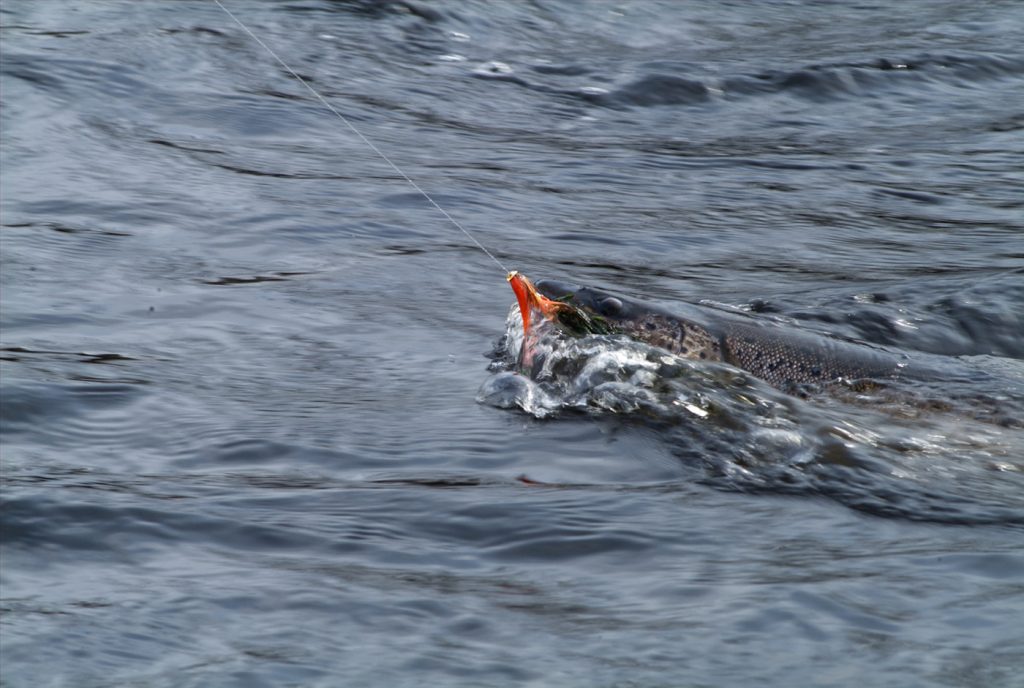
There are flies that are invariably associated with specific waters or places. Often, of course, those for which a specific fly might have been created. A clear example of this is a fly called Chillimps. A simple, orange palmer hackled wet fly for salmon.

The fly was created in 1942 by Swedish Rolf Vilhelmson and to add to the Scandinavian origin, he created it while staying at a hotel called Valhalla.
Hotel Valhalla is located in the small town, Mörrum, in southern Sweden. Most readers do not associate the name with the town as much as they do with the famous river of the same name. Mörrum is an incredibly beautiful river running through forrests, through the town Mörrum, where it continues straight south and exits in Pukaviken, a part of the Baltic Sea.
Coming from a forested area, the river, even when considered clear, always has a brownish tone, which is why Vilhelmson created this strongly coloured fly.
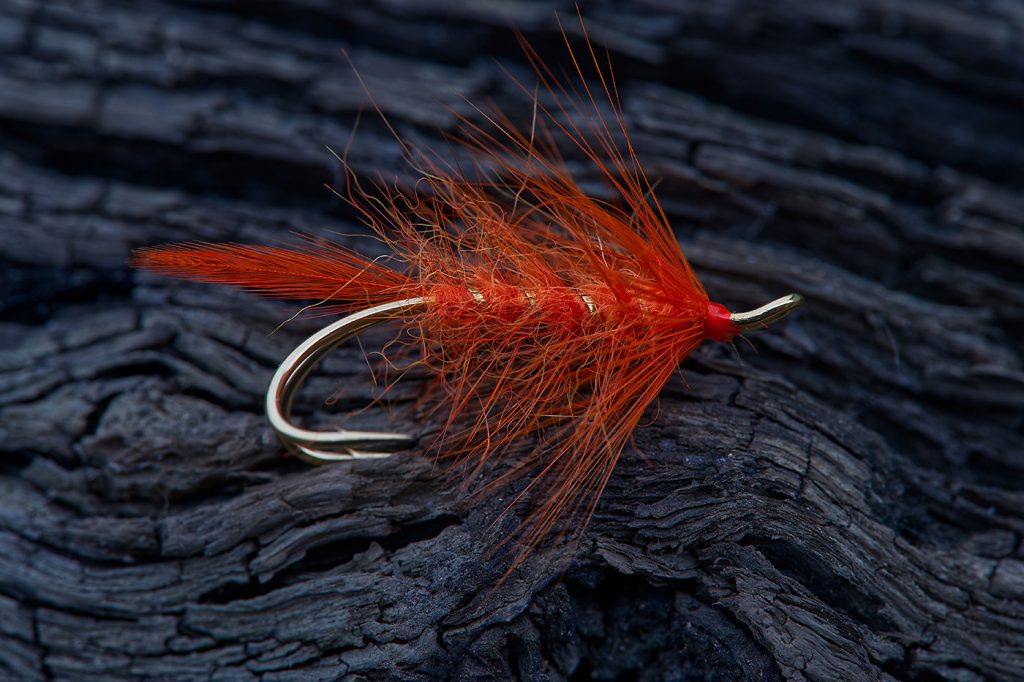
In Denmark there was a man called Valdemar P. Haugaard – a well known Danish fly fisher and fly tyer. Haugaard died in 1986, but left behind another well known fly, Jysk Chillimps (best read a Chillimps for Jutland).
He was one of the first to fish the rivers in the southern part of Jutland, after that part of Denmark was reunited with the rest of the country in 1920, after losing it to Germany in 1864.

Haugaard fished for brown trout and at some point, he created this fly, which didn’t get its name until many years later. The original material for the body was a light green cashmere wool from Haugaard’s old jacket. I’ve seen original samples of the fly and although not spot on, this wool yarn is close. Haugaard’s old jacket is long time gone anyway.
Haugaard chose the colour to match both gammarus in the rivers he fished and the colour of the larvae inside the cased caddis also found in the rivers. I suppose you can it’s a (very) impressionistic imitation of both.
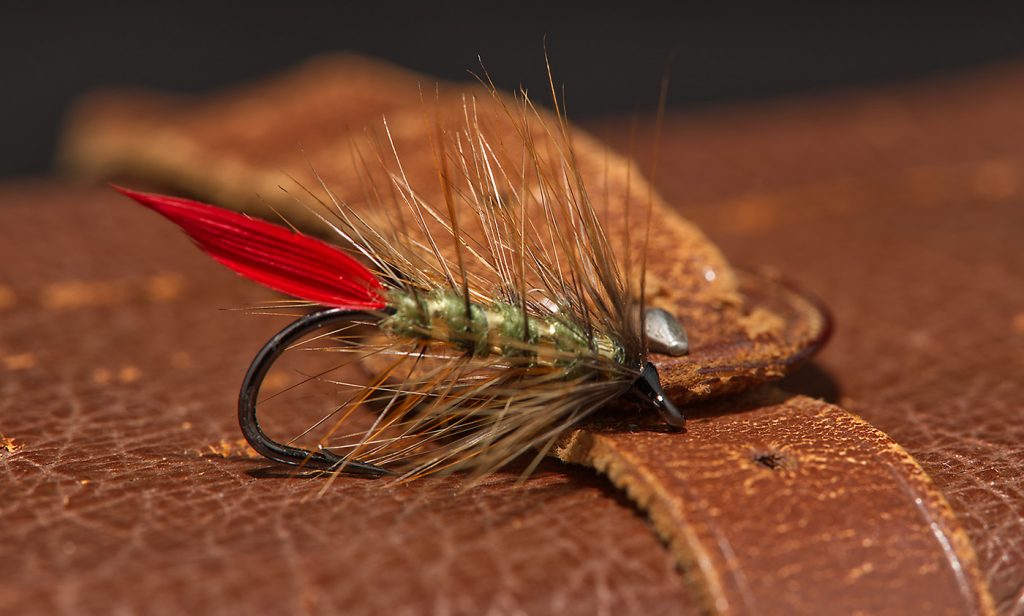
It was Olle Törnblom, also from Mörrum, who suggested that Haugaard’s fly should be named “Danish Chillimps”. Haugaard was from the island of Fyn and fished trout and grayling in Jutland, so he chose to name the fly “Jysk Chillimps”.
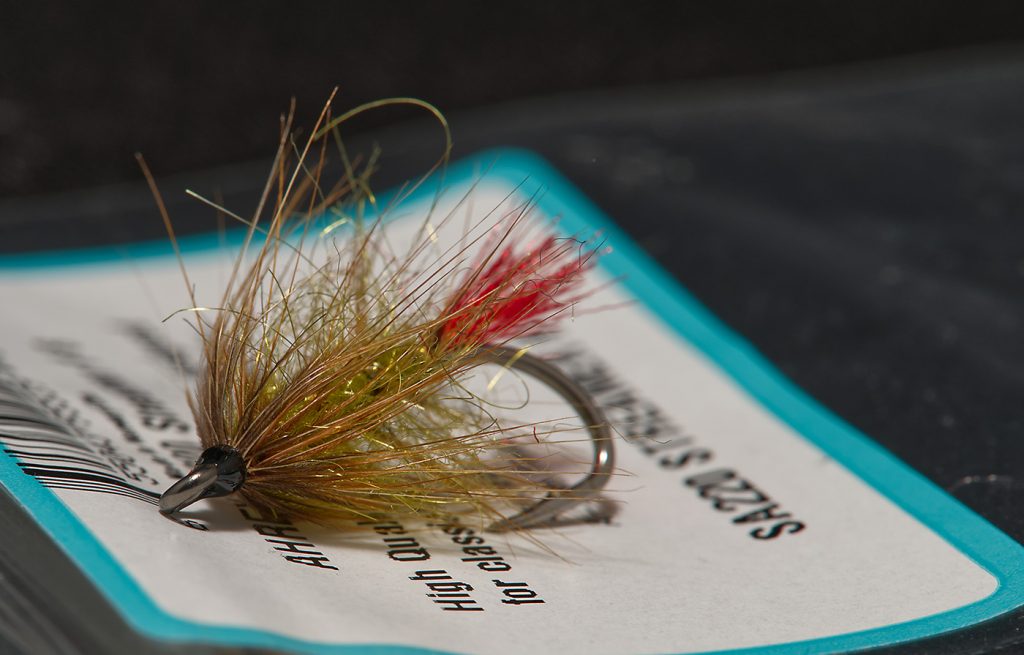
I like palmer flies for fishing sea trout in salt water as well, and when I was tying this, I decided to tie a modern, salt water version. Instead of wool yarn I used an olive SLF for the body and red fluorofiber for the tail.
Patterns:
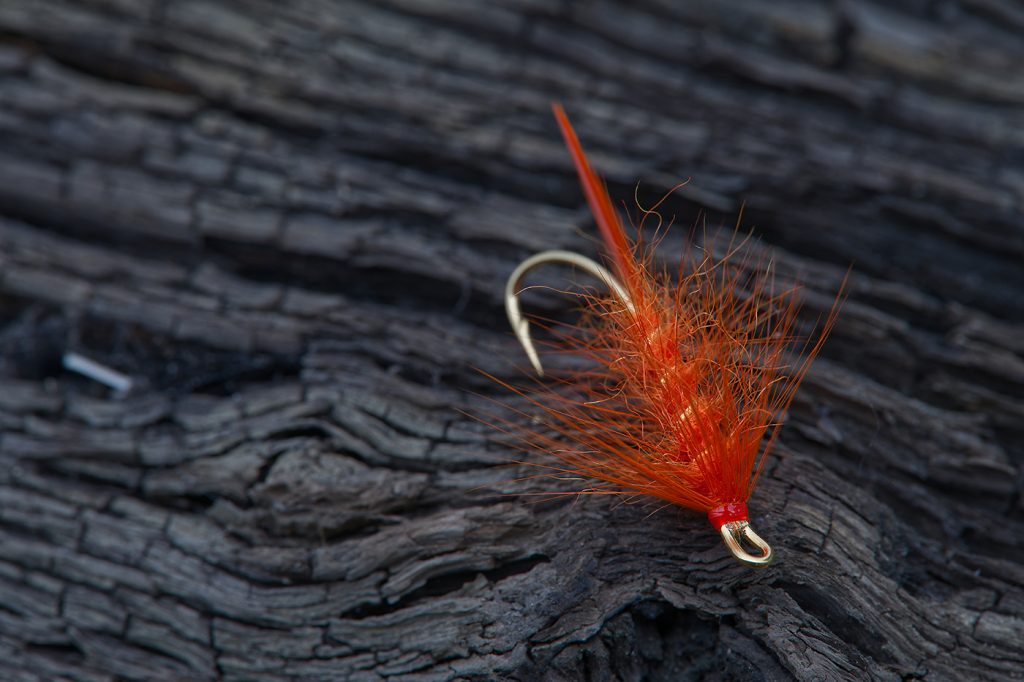
Chillimps:
Thread: Orange.
Hook: Ahrex HR 414, size 2-10. It can also be tied on doubles and the HR 428 in gold matches the orange fly perfectly.
Tail: Two orange hackle points.
Rib: Oval gold tinsel.
Palmer hackle: Orange cock hackle (if long enough, it can also form the front hackle).
Front hackle: Orange cock.
Tie the same fly on an SA 220 and you have an excellent fly for the cold season in the salt.
Jysk Chillimps:
Thread: Black.
Hook: Ahrex FW 580/580 size 8-14 for trout and grayling, Ahrex HR 410, 412 or 414 in larger sizes for sea trout and salmon.
Tail: Red goose (originally Ibis).
Rib: Flat gold tinsel.
Body: Green wool, describes a the green the leaves take on in the fall, before turning brown. Yarn or dubbing.
Palmer hackle: Natural brown cock hackle (if long enough, it can also form the front hackle).
Front hackle: Natural brown cock hackle.
SW Jysk Chillimps:
Thread: Olive or Tan.
Hook: Ahrex SA 220, size 4-10.
Tail: Red Fluorofibre.
Rib: Synthetic oval gold tinsel.
Body: Light olive green dubbing, here SLF.
Palmer hackle: Natural brown cock hackle (if long enough, it can also form the front hackle).
Front hackle: Natural brown cock hackle.
